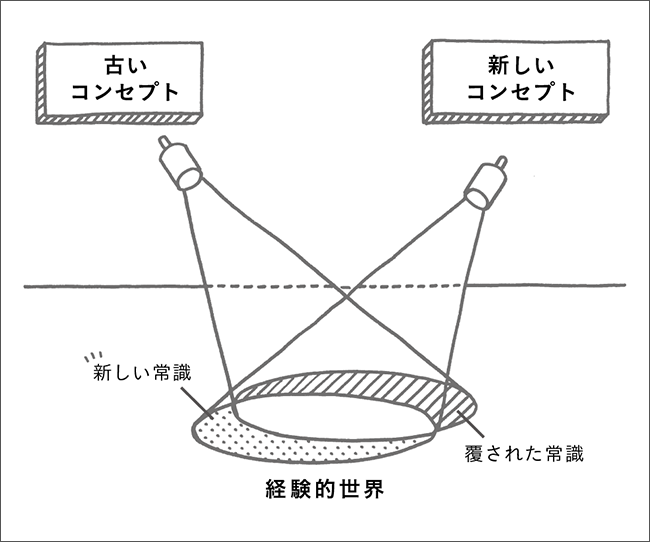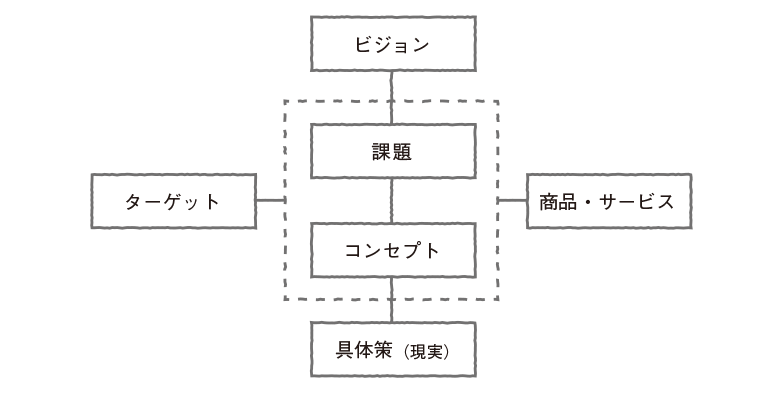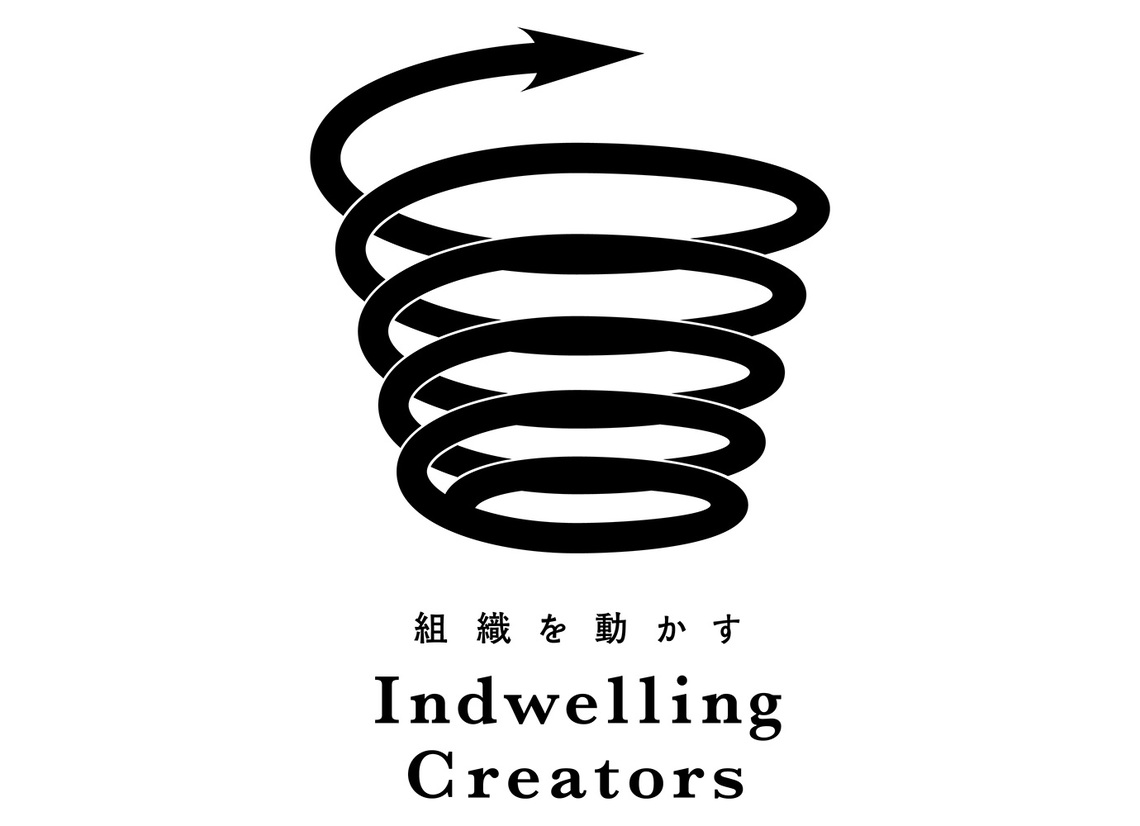"Well, concepts aren't mass-produced industrial goods, so when you talk about 'quality control,' it doesn't really click for me,"
Some people say this. However, just like industrial products, it's crucial to understand the methodology for improving quality precisely because concepts are custom-made each time, not just about rejecting defective ones.
It simply cannot be left to personal likes and dislikes. The key point I want to propose here is that many organizations can break out of stagnation through the "technique" of "concept quality control."
It consists of the following five perspectives:
① What "old conventions" is it overturning?
When presented with a "concept," some people immediately try to evaluate it based solely on the wording. Frankly, I suspect most people do this. But remember: as I've explained in past columns, a concept is a searchlight, and innovation is replacing that searchlight.
- Starbucks' "Third Place" is a "Coffee Stand"
- Southwest Airlines (a low-cost carrier)'s "flying bus" is "premium transportation service"
- Hiroshima Peace Memorial Park's "factory for creating peace" is a "memorial"
Each of these is valued as a "new" connection precisely because it overturns the "old common sense (old searchlight)."
Clearly articulating what the old searchlight is, then verifying how much new reality it illuminates (by how much distance it creates from the conventional viewpoint) is fundamental to "concept quality control."
② What "new concerns" have been identified?
Now, no matter how "new" something seems compared to the "old," if it doesn't create a "connection" between people and things/experiences, it ultimately doesn't become a "concept."
Based on that "connection," focusing on things/actions leads to "value" creation, focusing on people leads to "customer" creation, and focusing on the connection itself leads to "concept" creation. These three essentially represent the same thing. Within this, the most effective perspective for evaluating concept quality in practice is "customer creation."
If the "concept" before you is genuine, the vivid image of customers (and their struggles) will inevitably emerge. For example: - A third place concept reveals "people who lack a place to belong in the city." - A flying bus concept reveals "people unwilling to spend money on long-distance travel." - A factory creating peace reveals "people troubled by the difficulty of peace education." These are all vivid human realities ignored by "old common sense." They embody psychological distinctions not captured by demographic data like gender, age, or occupation.
Checking whether a concept—a "new connection"—is "truly new? (①)" and "actually creating a connection? (②)" is only natural.
③ What "direction" should we intuitively convey to our team?
A concept isn't just fancy wording for a proposal. To function as a shared "blueprint" among teammates, a metaphor is essential.
A metaphor is a technique, like "Time is Money," that replaces an aspect of something with a word that evokes a more concrete image, expressing it concisely. In fact, "third place," "flying bus," and "factory for creating peace" all use metaphors.
Why does a concept become a metaphor? The reason is simple: the "concrete" reality beyond innovation doesn't yet exist in this world. Things that already exist can be described with existing words, but things that don't yet exist can only be expressed through "analogies." Put another way, it's only through these analogies that participating members can intuitively grasp the "path forward" that no one has yet walked.
To make a metaphor function properly, it must use "words with a tangible feel." For example, "bus," "factory," "adventure," or "publishing house" are vivid words that even children could draw pictures of. On the other hand, terms like "playfulness," "comfort," or "deliciousness"—while their intended meaning as concepts might be vaguely understood—often fail to evoke concrete images. Therefore, while I wouldn't say they should never be used, they require careful consideration.
When presented with a concept, can you (even vaguely) visualize what to do concretely? And is metaphor being used effectively? This is a point you can actually evaluate almost instantly, even before scrutinizing whether it's a "new connection" (i.e., ①②).
④ What kind of "numbers" does it suggest?
A truly groundbreaking "concept" always starts from a subjective feeling—like a vague sense of unease an individual holds. As it gradually takes shape through dialogue and becomes intuitively shareable with others via metaphor, it becomes the "concept's prototype." But that's not the end. You must shift the stage for refinement to the "world of objective analysis" and keep polishing it until "numbers" like revenue become visible.
For example, the Hiroshima Peace Memorial Park's concept as a "factory for creating peace" – which uses a path from harrowing wartime exhibits to the Atomic Bomb Dome visible amidst today's peaceful Hiroshima scenery to make countless people truly feel the "importance of peace" – revealed a vivid customer profile: "people struggling with the difficulty of peace education."
Conducting certain surveys might allow us to estimate that number (the scale of latent demand for peace education). However, moving a project forward based solely on such wishful thinking is far too dangerous.
If you truly want the concept to function in a project, you need to know how likely "peace education" is to "win out" against other objectives held by decision-makers for school trips, such as "teaching history (Kyoto)", "exposing them to cutting-edge technology (Tokyo)", or "experiencing nature (Hokkaido)". Or, you need to consider whether there are accommodation facilities and transportation infrastructure capable of meeting such demand.
In reality, it's precisely by passing these rigorous tests of "marketability," "competitiveness," and "profitability" that the "numbers" become clearer, and the "concept" nears completion.
A concept is not merely a bold slogan. It is the strategy itself. That is precisely why genuine concepts always reveal the "numbers."
⑤ What "ideal" will it realize?
Seeing what "numbers" emerge is the "horizontal" movement in the cross-frame. But a concept also has a "vertical" role: it must contribute to a "vision (realistic idealism)."
Maximizing profits is crucial, of course. But to make that sustainable, we must also ask: "How will this concept make the world better?" This is also a verification of whether it aligns with the organization's true nature.
To summarize simply, concept quality control is the process of verifying whether "moving toward a shared direction (③) through new (①) connections (②)" enables the realization of both numbers (④) and ideals (⑤).
It's true that in high-context cultures, like those characterized by unspoken understanding, concepts often "just get through" without explicit quality control. However, the reason Japanese coffee shops, which have long provided a "third place," failed to dominate the world market was likely because they couldn't properly capture that "meaning." ( For more on "third places" and Japanese coffee shops, see here ).
Yes, a concept is meaning itself. If the new meaning born there can be thoroughly articulated according to these five perspectives, innovation accelerates in many organizations. Indwelling Creators supports the revitalization of organizational activities with "concept quality management" as its core technology.
Now then.
What I crave in my wife's hometown of Takamatsu are dishes spotlighted as "local cuisine." This time, I encountered recipes for spring staples: "Chisha Momi" and "Konoshiro no Teppai."
The former is a dish of "Chisha" (a traditional Japanese vegetable mentioned in the Manyoshu poetry anthology, though it's often substituted with sunflower lettuce these days) tossed in vinegar miso. The latter is a dish of konoshiro (young horse mackerel) that has grown larger than 15 cm, marinated in vinegar, and also tossed in vinegar miso. Encouraged by the person who taught me saying, "Anything goes~!", I mixed them together like this.
I also stir-fried leafy burdock, salt-grilled small shrimp from the Seto Inland Sea, and boiled the early-season asparagus "Sanuki no Mezame." Take a sip of Kagawa's representative local sake, "Kawatsuru" Junmai Genshu Naomimi, and ah, spring is in full bloom.
Please, enjoy!














